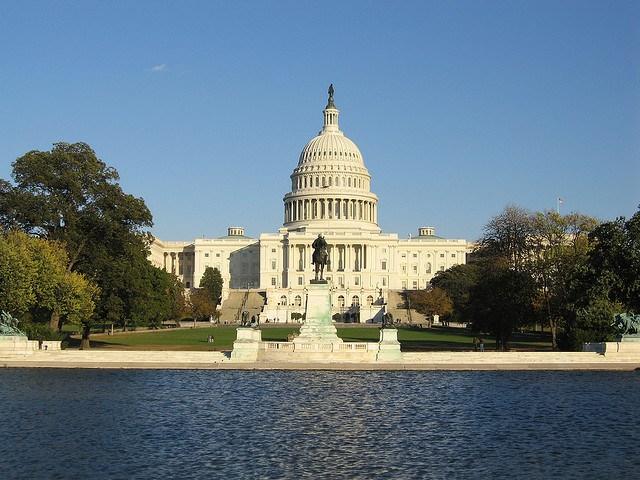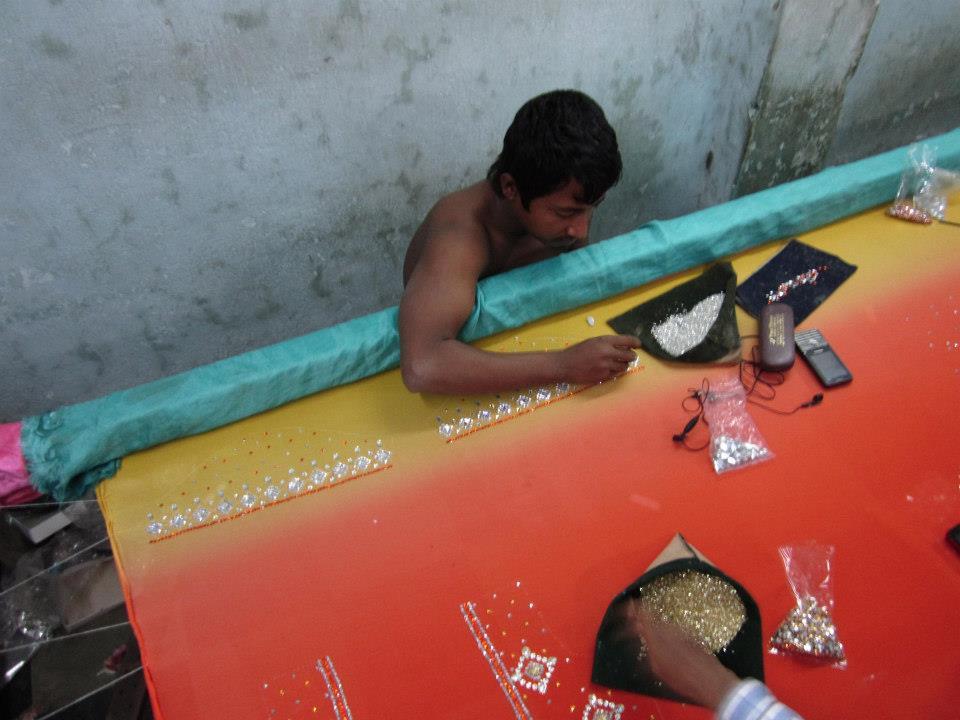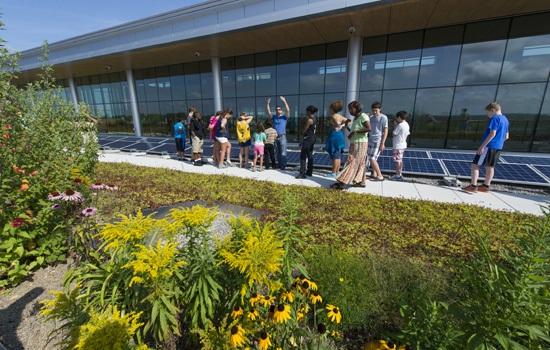RECAP - Stories & Beer: Accelerating the Solar Revolution


Tonight, we hosted our monthly "Stories & Beer" Fireside Chat at the Impact Hub, and online via webcam.
Solar energy is hotter than ever, but it’s still only a small percentage of our overall electricity production. What’s being done to speed it along?
We learned from experts in innovation, from both the grassroots and major-scale utility level, about the current state of solar adoption and what various players are doing to advance it.
HERE'S THE RECAP VIDEO FROM THE FIRESIDE CHAT:
Monthly Event Schedule
- 6:30 – 7:00 – beers and networking
- 7:00 – 8:00 – fireside chat and Q&A
- 8:00 – 8:30 – networking
Andreas Karelas, Executive Director, RE-volv
Andreas is a dedicated renewable energy advocate with over ten years of environmental and renewable energy nonprofit experience. Andreas incorporated RE-volv as a nonprofit organization in February 2011. Prior to founding RE-volv Andreas worked with a number of leading organizations including the American Council on Renewable Energy (ACORE), the National Audubon Society, blueEnergy, and the Center for Resource Solutions. Andreas holds Master’s degrees in International Affairs and in Natural Resources and Sustainable Development, and a Bachelor’s degree in Economics. He is a 2013 Audubon Toyota TogetherGreen Conservation Leadership Fellow. He also serves on the Steering Committee of the Local Clean Energy Alliance.
Jason Rissman, Managing Director, OpenIDEO
As Managing Director, Jason leads the OpenIDEO team in expanding the impact of IDEO’s Design Thinking methodology by allowing people everywhere to collaborate in addressing pressing global issues. OpenIDEO is an open innovation platform and community that hosts sponsored challenges on topics ranging from Ebola and adoption of renewable energy, to early childhood development and youth employment.
Brian Bishop, Senior Program Manager, PG&E
Brian Bishop is the Senior Program Manager of the California Solar Initiative Thermal Program and Self Generation Incentive Program (SGIP) at Pacific Gas and Electric utility in San Francisco, CA. These are Statewide incentive programs to promote the adoption of solar water heating, wind, energy storage, fuel cell and other technologies that reduce greenhouse gas emissions. Brian has many years of senior business management and renewable energy experience in the solar thermal, photovoltaic, green building, non-profit, government and utility sectors. He’s been responsible for the management of hundreds of PV installations in California and Arizona, has solar on his own roof, and is interested in resolving environmental issues with creative and sustainable business practices. He holds a MA in Environmental Science & Geography, and a MBA in Sustainable Management.
Chime in to the chat on Twitter using #3pChat!
Introducing the Healthy Climate and Family Security Act


A major press conference today featuring Bill McKibben and U.S. Rep. Chris Van Hollen, as well as senior Sierra Club leaders, announced the launch of a new Congressional bill aimed at simultaneously addressing the issue of climate change with that of broad growth in the American economy.
The bill, HR 5721 or the Healthy Climate and Family Security Act, is an update of a bill introduced last year by Van Hollen, a Democrat from Maryland. It is, in essence, a cap and dividend plan that would collect gradually increasing fees on the “first sellers” of fossil fuels, with all of the proceeds being distributed equally to all American citizens. The fees would be collected as a limited number of pollution permits were sold at auction, and the dividends would be paid quarterly to every American with a social security number. The rationale behind this is that since we all are collective co-inheritors and co-trustees of the atmosphere, the polluters should be paying us for the right to use it as part of their business.
Increasing the cost of bringing carbon-based fuels to market will level the playing field, proponents argue, accelerating innovation and the use of low-carbon alternatives both by energy companies and consumers. Increased investment will help create more jobs in the green economy. At the same time, putting more money in hands of consumers (Rep. Van Hollen estimated $1,000 per person or $4,000 for a family of four) will also help stimulate the economy, creating even more jobs.
While it’s not at all clear whether the Republican-dominated House will even take up the bill, it will provide a rallying point and get the conversation going. The fact that the bill is revenue neutral means that is not a tax at all, giving it at least a fighting chance of passing Grover Norquist’s shoot first and aim later test on taxes that so many Republicans have pledged adherence to.
Van Hollen says he fully expects a similar bill to be proposed in the Senate.
What’s unique about this bill is that, unlike cap-and-trade bills, there are no offsets or loopholes that Van Hollen calls “leakage.” Every pound of carbon will be paid for. The dividend portion is also uncommon though there is a similar provision in Alaska’s Permanent Fund, which pays dividends to citizens for tolerating the presence of the oil industry in their state.
Of course, it’s a little naïve to think that energy companies won’t simply pass the majority of these costs along to consumers. But let’s take a look at what happens if they do. If your energy consumption is equivalent to the average American, then you will get back approximately what you paid in. Additional fees paid at the gas pump or to your utility company will come back in the form of dividends when you file your tax return. If you drive a fuel-efficient car and have insulated your house well, you will likely get back more than what you put in. On the other hand, if you drive a gas-guzzler, you might not get it all back. Family size could matter here, too. A family of four might not use twice as much energy as a family of two, though they will get twice as much back. Still the incentive to use less energy will always be there. So, if you were thinking about putting solar panels on your roof, for example, this could be the extra nudge you need.
Former Treasury Secretary Larry Summers pointed out a few weeks back that with gasoline prices hitting lows not seen in years, this would be an excellent time to implement a carbon tax. With gas prices down by well over a dollar, no one is going to scream about a 25-cent increase. The amount raised could be enormous. "That which is not paid for is overused,” Summers said, which is exactly what the fossil fuel industry is doing with our atmosphere: using it a dumping ground for the byproducts of their fortunes, which has inadvertently disrupted our planetary climate system. The current state of affairs provides little incentive for them to cut back. Should this bill become law, there will finally be a price signal that makes managing carbon emissions an economic choice as well as an ethical one.
So, if what Larry Summers said is true, given low prices it will be even more true when consumers learn that they will get money back, possibly more than they put in. For energy producers, it will provide the one thing that has been lacking as they try to plan for the future: certainty. Most companies play to win, but it’s hard to even play when you don’t know what the rules are. With that question settled, the second-guessing is gone, and it simply becomes a matter of execution.
Image credit: Chris Guy: Flickr Creative Commons
RP Siegel, PE, is an author, inventor and consultant. He has written for numerous publications ranging from Huffington Post to Mechanical Engineering. He and Roger Saillant co-wrote the successful eco-thriller Vapor Trails. RP, who is a regular contributor to Triple Pundit and Justmeans, sees it as his mission to help articulate and clarify the problems and challenges confronting our planet at this time, as well as the steadily emerging list of proposed solutions. His uniquely combined engineering and humanities background help to bring both global perspective and analytical detail to bear on the questions at hand. RP recently returned from Abu Dhabi where he attended the World Future Energy Summit as the winner of the Abu Dhabi blogging competition.
Follow RP Siegel on Twitter.
Video: How Do Commodity Suppliers Go Sustainable?


Social and environmental responsibilities are rarely at the top of mind when suppliers are racing to the bottom of the price curve. That’s why sustainability is hard to come by in commodity industries. But a small giant in New Zealand is changing all that, at least when it comes to wool.
Dave Maslen is global partnership and sustainability manager at the New Zealand Merino Co. (NZM). In this video interview (after the jump), he shares the story of how Merino brings traceable, sustainably-produced wool to market by working directly with farmers and the value chain. Traditionally, farmers sell their wool in the spot commodity market. This makes for fluctuating and unpredictable prices, and significantly impacts on the sustainability of both the grower and the value chain. To change this dynamic, NZM facilitates the purchase of wool from farmers through multi-year supply contracts, targeted at sustainable pricing for growers, value chain and brands alike.
This is managed through a program called ZQ Merino. In return, participating farmers adhere to environmental, social, wool quality and animal welfare standards on their wool production systems. Because this is transacted via direct contract, NZM is also able to confirm traceability of the wool back to the individual farm. Having contracts is of significant importance to growers, allowing them to make prudent and informed decisions regarding breeding and genetics, farm management, capital expenditure, and farm succession (i.e. passing the farm on to their younger generations).
NZM partners with high-end wool apparel brands that value sustainable wool and links them to growers. Leadership brands including Ibex, Smartwool and Icebreaker, take advantage of this sustainable model as it provides a guarantee that the wool will meet technical specifications and sustainability performance ‘standards’ year on year, providing confidence of supply, confidence of quality, and confidence in the ethics and responsible farming practices applied by contracted growers.
ZQ Merino Standards are set to confirm environmental and social responsibility, animal welfare, and fibre quality. They are audited by AsureQuality NZ to take account of the vast and ecologically diverse farming systems from which NZM sources the Merino fibre. Key to ZQ Merino standard is the requirement for growers to provide for the five animal welfare freedoms at all times, including no mulesing, a painful procedure sometimes used to reduce the risk of parasite (fly) infestation. These aspects are audited using a government owned, independent third-party auditor to confirm grower compliance.
The approach is working. The New Zealand Merino company was a finalist of New Zealand's International Business Awards in 2013. Its farmer network raise healthy, happy sheep that live in some of the most stunning natural environments in the world. Commodity markets the world over can take a lesson from NZM on how to set up the right incentives to turn a price driven market into a quality and sustainability driven one.
How do Commodity Suppliers go Sustainable? from Connie Kwan on Vimeo.
Connie Kwan is a Product Manager and Entrepreneur in Silicon Valley, CA. She holds an MBA in Sustainable Management from Presidio Graduate School, and covers stories about triple bottom line businesses and projects. Follow her on Twitter @ConnieMKwan
Emerging Markets and the Multi-Million Dollar Solar Boom


Editor’s Note: This post originally appeared on Unreasonable.is.
By Jigar Shah
In 2012, India set the record for the largest energy blackout in history, affecting more than 700 million people and exposing the weakness of the national grid. There are a handful of technologies that can deliver reliable power to a country like India that suffers from endemic power cuts — and rooftop-solar power is one of them.
While the potential for rooftop solar is vast, a lack of financing stifles many entrepreneurs’ efforts to provide local people with reliable solar power. Local banks are uninterested in funding this seemingly “new” technology, even though it’s been around since the 1970s. International lenders like the Overseas Private Investment Corp. (OPIC) and the International Finance Corp. (IFC) could jumpstart the market by providing the initial funds, but they are stuck in the past paradigm of big centralized power plants. To catalyze the rooftop solar industry in India and beyond, international lenders need to develop a new framework to invest in small-scale solar projects.
There is great need for reliable power in India. In some states, power cuts occur everyday and can last for more than 16 hours. In all cities, blackouts are likely to occur and are most dangerous on hot summer days when everyone is using their air conditioners. Conveniently, solar power is the perfect solution to this problem because its peak production occurs in the middle of the day providing electricity to people when they need to cool down. As solar power scales up, it can eventually eliminate that mid-day peak as has already happened in countries with a lot of solar power, like Germany.
In nearly half of Indian states, rooftop solar is cheaper than the electricity commercial buildings can buy from the grid. And in nearly all states, it is cheaper than electricity from diesel-backup generators. Instead of spending billions of dollars on diesel and unreliable grid electricity, that investment can be used to deploy rooftop solar.
This is already occurring globally. In 2014, almost 140 billion was invested in the solar industry. Of this massive investment, $70 billion was invested in smaller-scale, distributed solar projects like rooftop systems. Scale increasingly means that dozens of rooftop installations can be aggregated into billions of dollars of deployment. Small is big.
Deploying billions of dollars of rooftop solar requires investment, and local investors and banks in India are not getting the job done. Some international organizations are helping to fill the gap though. Obama announced a $4 billion government-backed investment in India this past month. Half of that sum will go towards renewable energy through the U.S. Trade and Development Agency, and another $1 billion from the OPIC will be lent to small and medium-size businesses (SMBs) in rural areas. These sums are a great start, but they won’t reach local solar entrepreneurs unless the big organizations change their mindset.
International lenders are still stuck in the past when electricity meant big, centralized power plants with extensive grids. This model has failed to bring reliable electricity to millions of Indians as well as the 1.3 billion people globally without access to electricity. International lenders have been unsuccessful in financing rooftop solar because it is too small; they need to figure out how to make their big grants reach small solar systems.
The investments big institutions—the IFC, OPIC, and US Export Import Bank—make into local entrepreneurs deploying rooftop solar will demonstrate to local financiers the attractive return sitting under their noses. As domestic lenders pile into the rooftop solar market, the international funding organizations can step aside and use their funds to catalyze the industry in another country. In turn, this will unleash a multi-billion dollar investment opportunity, like what is happening in the US and Europe.
The rooftop solar industry in India and other emerging markets is prime and ready to boom. All that is need is a few savvy financiers to light the spark that starts the solar revolution.
Image credit: Flickr/Hiroo Yamagata
Jigar Shah is the co-founder and President of Generate Capital and the author of "Creating Climate Wealth: Unlocking the Impact Economy." He founded SunEdison, the world’s largest solar services company, and was the founding CEO of the Carbon War Room.
Duke Energy Pleads Guilty to Charges Under Clean Water Act


Federal investigators have finally released the results of a year-long investigation into Duke Energy coal ash spills in North Carolina. Three U.S. attorney's offices and the Department of Justice Environmental Crimes section, have filed charges against Duke Energy for dumping waste in a string of events that date back to at least 2010.
U.S. attorney's offices for the western, eastern and middle districts of North Carolina each filed criminal bills of information last week in the district courts. The charges allege violations of the Clean Water Act that include unlawfully dumping coal ash and/or wastwater and failing to maintain onsite equipment at designated Duke Energy stations.
Five Duke Energy facilities were cited by federal investigators: The Riverbend Steam Station (Gaston County); Asheville Steam Electric Generating Plant (Buncombe County); H.F. Lee Steam Electric Plant (Wayne County); Dan River Steam Station (Rockingham County); and Cape Fear River Steam Electric Plant (Chatham County), which we covered in a story last March.
Charges were filed against three subsidiaries of Duke Energy Corp. The federal cases are expected to be consolidated under the jurisdiction of the eastern district court in Raleigh, North Carolina.
The charges follow unsuccessful attempts by environmental groups to sue the energy giant, which they alleged in 2013 was responsible for polluting North Carolina waterways with coal ash and wastewater. The North Carolina Department of Environment and Natural Resources intervened in their attempts each time, saying it had jurisdiction and would take enforcement action. After the department announced that the $55 billion company would pay $99,000 in fines, environmental groups objected, accusing the DENR of brokering a "sweatheart deal." Federal investigators later stepped in, issuing subpoenas in an effort to determine whether the company received preferential consideration by state agencies.
A couple of months after the Dan River spill, we interviewed Attorney Frank Holleman of the Southern Environmental Law Center (SELC), who explained that SELC and Waterkeeper Alliance had also petitioned to be involved in the cleanup efforts. He said at the time that the groups were taking this effort as a legal step in order to "have a voice before the court to press Duke to effectively clean up" the contamination. The petitioners, he said, had lost faith in the DENR to actually enforce cleanup of the river.
"We have seen that we cannot count on the DENR to effectively enforce the law and require cleanups of these sites," said Holleman.
According to Greenpeace, which had also been pushing for cleanup, much of the 39,000 tons of coal ash that was released in Duke Energy's largest spill was never successfully cleaned up by the company -- and now sits at the bottom of the river. At the time, advocacy groups feared that the expenses from the spill would be left for taxpayers to cover.
But last week's announcement seems to be clearing some way for further cleanup of the river. In response to the charges, Duke Energy indicated that it has already set aside $100 million to cover fines and river restoration.
It has also released a list of steps it plans to take toward that aim. Improvements include "[removing] ash deposits below the Dan River plant and continuing to take direction from the U.S. Environmental Protection Agency regarding any future ash removal needs."
The company will also create a $10 million water restoration fund that will include a $1.5 million designation to "benefit waterways and help develop the economic and community vitality of the region."
Although Duke Energy stocks were up today, the company reported an 86 percent drop in earnings for its fourth quarter net income, which could be the result of the slate of state and federal investigations in 2014.
"We are sorry for the Dan River spill, and remain grateful to our friends and neighbors for your support," CEO Lynn Good said in follow-up to news of the plea bargain.
Environmental groups are hailing the announcement of federal charges and are pushing for continued improvement in the management of the company's coal ash dumps.
"Duke Energy and its executives must show the people of North Carolina that they are sorry for these crimes by moving the dangerous and polluting coal ash to safe, dry, lined storage away from our rivers and drinking water supplies,” Holleman said. SELC legally represents 12 national and state environmental groups, including Waterkeeper Alliance, Southern Alliance for Clean Energy and Sierra Club.
Image of Cape Fear River: Gerry Dincher
3 Leaders to Keep You Inspired Every Day


By Katherine Smith
"I can teach anybody how to get what they want out of life. The problem is that I can't find anybody who can tell me what they want.” ― Mark Twain
The new year inevitably brings rumination about where we’ve been, contemplation about where we are going and predictions of future trends. This annual ritual can be overwhelming as our piles of prognostications and advice grows larger and the speed at which it accumulates accelerates.
Most of us enter the new year thinking about goals, and our default is to think about new goals and resolutions. Twain’s quote made me think that the continual push to the new might not be helping us get to our goals. It could be that the path to the peace and shared prosperity that we have wished each other as holiday tidings over the past couple of months — and that is central to the work of corporate responsibility professionals — might be more easily blazed if more of us spent less time thinking about the new 'new thing' and focused with greater intensity and determination on the old things that continue to be really important.
I continue to believe that the greatest opportunities for business will ultimately be for those who have the courage and discipline to set goals that extend beyond the fiscal quarter to long-term value-creation. If we lengthen the lens, the divergent interests of profit and sustainability become more convergent. Without this shift in perspective, the centrifugal force of our fast, volatile economy may spin all but the most centered off of the merry-go-round that is our economy. Those that maintained their grounded long-term perspective will have the competitive advantage of having developed their competitive attributes while having simultaneously improved their own operating contexts — and our world.
If you are looking for inspiration on how you might establish your own center, focus and goals, here are just three of the people I have been following who might also offer you inspiration. I think they are some of the most interesting voices in business over the last year. Here’s why they inspire me.
1. Michael Dell, chairman and CEO, Dell
If you think in terms of a year, plant a seed; if in terms of 10 years, plant a tree; if in terms of 100 years, teach the people. Those are the words of Confucius, but they might as easily be the words of Michael Dell.
He has been an outspoken advocate for taking a long view for value creation along a variety of important issues ranging from environmental sustainability to job creation in developing economies. In the same year he took his company private, Dell doubled down on commitments to improve the environmental impacts of his products and commitments to report progress on those goals. In the same year, he became a global advocate for entrepreneurship on behalf of the United Nations with an eye toward ensuring that job growth becomes one of the U.N. Sustainable Development Goals.
Seeing these commitments made by a huge private company that does not have the same reporting requirements as it did when it was public will hopefully raise the bar for us all. To see more of Michael Dell in his own words follow these links:
- "Going Private Is Paying Off for Dell"
- "Michael Dell on the new (private) Dell"
- "Michael Dell on Innovation and Global Technology Solutions"
2. Hans Rosling, global health expert, data visionary
“In god we trust, all others bring data.” These are the words of W. Edwards Deming, one of the founders of the quality movement, but they might as easily be the words of Hans Rosling, who has made data visualization his life’s work and who has put his life’s work in the public domain so that we can all get a little more educated about the world around us.
Rosling has aggregated most major public global data sources in a platform that allows curious minds a free tool to explore how different socio-economic and environmental factors have so far and might in the future affect human well-being. To use Rosling’s own tagline, “Pretty cool, eh?” To see Hans Rosling’s work, check out Gapminder.
3. Michael Lewis, best-selling author, journalist
Author Michael Lewis has written another great story. "Flash Boys," a remarkable piece of nonfiction that follows a small Wall Street team as it works to reform the financial markets — actually makes high frequency trading (HFT) and its effects on markets understandable to the lay person. This is just his most recent in a long line of best-selling page turners penned by this author, including "Liars Poker" and "The New New Thing." I am inspired by Lewis’ prolificacy, his gift for writing compelling characters and his effort to make complex subjects comprehensible to his readers. To learn more about Michael Lewis and his books, visit his website.
Image credit: Flickr/Vinoth Chandar
Katherine Smith is the Executive Director for the Boston College Center for Corporate Citizenship. Celebrating 30 years of helping companies know more, do more and achieve more in corporate citizenship, the Boston College Center for Corporate Citizenship was founded by an early recognition that community expectations of companies were changing. The Center combines the most valuable aspects of a professional community and the resources of a leading academic institution for 415 Fortune 1000 member companies in a variety of industries. The Center integrates the perspectives and experience of some of the leading corporate citizenship professionals in the field today with management best practices, helping align corporate citizenship objectives and business goals.
New Platform Sheds Lights on Multinationals and Human Rights


Business and Human Rights Resource Center, a United Kingdom-based independent NGO, today released a new interactive platform that sheds more light on the effects multinationals and governments have on human rights. The organization’s data, the result of surveying 50 national governments and 72 companies, shows that while progress has been made, more work needs to be done.
The results are hardly surprising: Many respondents repeated the oft-heard notion that a complex supply chain and weak government enforcement pose challenges to businesses that say they are committed to human rights. But considering how some business sectors have a struggle with both their track records and perception that they are making progress on human rights, the nature of the organizations that did and did not participate are surprising.
Companies across the world responded, including Coca-Cola, China’s national oil company CNOOC and the Spanish telecommunications giant Telefónica. Of the 50 companies that participated in the survey, 34 already have a publicly-available human rights statement. Among the corporations that returned the survey, the food and beverage sector had the highest response rate at over 70 percent — which is encouraging, considering the impacts this sector has on social issues like land rights, water scarcity, and even public health and obesity.
Meanwhile, the retail and garment sectors were relatively quiet, with only 1 in 4 apparel companies participating in the survey. With the two-year anniversary of the Rana Plaza factory collapse in Bangladesh approaching, and the human rights violations that have damaged the reputation of many companies within this industry, the lack of responses will raise a few eyebrows.
“While the major apparel companies like adidas, Nike and Gap have human rights policies and systems in place and engaged with this survey, it is disappointing that many others in the wider retail sector were silent,” said Annabel Short, program director of Business and Human Rights Resource Center. “Major online retailers like Alibaba, Amazon.com and e-Bay as well as retail outlets such as Costco, Fast Retailing (owner of Uniqlo) and Walmart have not yet responded to this survey. These companies have huge impacts through their supply chains, and also in their treatment of employees. We hope to see greater action and transparency by these firms on human rights, sooner rather than later.”
In fairness, the amount of surveys that arrive by post and email often overwhelm those tasked by companies to handle their sustainability and corporate responsibility work — a fact I personally have heard from many professionals who usually head these efforts alone or with a skeleton staff. Some companies such as Costco, which have a stellar reputation with how they treat their employees and suppliers, may have just buried the survey deep in their inbox. Survey fatigue, not the assumption a company is trying to hide something (today’s technology takes care of that, thank you), often gets in the way of completing these surveys.
Meanwhile the response of those from governments was all over the map. Most European Union nations responded, as did those considered active on business and human rights issues — those countries included the United States and Brazil. In addition, Angloa, Bahrain, Israel, Japan and Burma -- countries still in the early stages of policy development — also completed the survey. Meanwhile, some of the world’s largest economies, including Canada, China, India and Russia, were silent.
So, what will this survey mean in the long run? For now it is literally business as usual: Business and government continue to point fingers at each other, saying the other side is getting in the way of progress on human rights. But Business and Human Rights Resource Center claims that the data it has culled can give companies and government agencies an idea of how to strengthen human rights policies that can boost transparency and improve a company’s reputation in the long run.
Image credit: Leon Kaye
Based in California, Leon Kaye is a business writer and strategic communications specialist. He has also been featured in The Guardian, Clean Technica, Sustainable Brands, Earth911, Inhabitat, Architect Magazine and Wired.com. When he has time, he shares his thoughts on his own site, GreenGoPost.com. Follow him on Twitter and Instagram.
16 Organizations Recognized as U.S. Climate Action Leaders


With 2014 acknowledged as the hottest year on record, U.S.-based organizations are taking substantive measures to address climate change. They're taking innovative steps to lower greenhouse gas (GHG) emissions and reduce the resource-intensity of their operations, including selling carbon credits to fund clean energy projects on U.S. university and college campuses, and realizing more ambitious GHG emissions and pollution reduction targets.
In order to help achieve the goals set out in President Barack Obama's National Climate Action Plan, the Environmental Protection Agency in 2012 launched the Center for Corporate Climate Leadership. Every year, the EPA recognizes climate action leaders among U.S. businesses, organizations and individuals by awarding Climate Leadership Awards.
On Feb. 24, the EPA announced the 2015 Climate Leadership Award winners, honoring “16 organizations and one individual representing a wide array of industries from finance and manufacturing to retail and technology” that have demonstrated “exemplary corporate, organizational and individual leadership in response to climate change,” EPA states in a press release.
National recognition for U.S. climate action leadership
Actions to mitigate and adapt to climate change are successfully reducing GHG emissions. U.S. organizations, moreover, are finding that taking climate change action benefits their financial bottom lines, the EPA highlights. EPA Climate Leadership Award winners “are demonstrating that innovative actions to combat climate change are smart business decisions,” the federal environmental agency states.
“I am proud to recognize our Climate Leadership Award winners for their actions to reduce the harmful carbon pollution that’s fueling climate change,” EPA Administrator Gina McCarthy was quoted as saying. “Our winners are demonstrating that a healthy environment and a strong economy go hand in hand. These organizations are providing the leadership, commitment, and solutions needed to cut greenhouse gas emissions and meet head on the challenge of a changing climate.”
EPA manages the Climate Leadership Awards process in partnership with the Association of Climate Change Officers, the Center for Climate and Energy Solutions and The Climate Registry (TCR).
2015 Climate Leadership Award winners
The winners of the inaugural Climate Leadership Award for the Innovative Partnerships Certificate are:
- Chevrolet for its Clean Energy Campus Campaign, which for the first time enables colleges to use carbon performance methodologies to earn revenue via GHG reductions that result from on-campus efficiency and clean energy;
- The San Diego Regional Climate Collaborative, which supports members in setting and meeting GHG reduction targets via training and information on GHG inventory and monitoring tools, as well as sharing climate action plan templates and supporting local governments to create and implement climate action plans;
Bank of America garnered the 2015 Climate Leadership's Organizational Leadership Award for completing its GHG inventory and setting an aggressive emissions reduction goal. BoA also exhibited “extraordinary leadership in its internal response to climate change through engagement of its peers, competitors, partners and supply chain,” EPA notes, as well as in “addressing climate risk in its enterprise strategies.”
The only individual to earn a 2015 Climate Leadership Awared, Mayor Bill Finch of Bridgeport, Connecticut, was presented the Individual Leadership Award “for demonstrating extraordinary leadership in driving meaningful climate action within the Greater Bridgeport community and throughout the city's operations.” Under Mayor Finch's leadership, Bridgeport has set a goal to reduce the city's GHG emissions to 10 percent below 2007 levels by 2020.
The city and county of San Francisco, Clorox Co., DPR Construction, SC Johnson, Sprint and UPS won 2015 Climate Leadership Awards for Excellence in Greenhouse Gas Management (Goal Achievement Award).
*Image credits: 1) EPA Climate Leadership Awards; 2) Chevrolet Clean Energy Campus Campaign
Keurig Green Mountain Releases 2014 Sustainability Report


Most of Keurig Green Mountain's facilities are in low water risk regions, except for the one in Castroville, California. That facility is located in Monterey County, which, like nearly the entire state, is suffering a severe drought. The good news is that Keurig’s Castroville facility only withdraws a small amount of water from local supplies. That's great in a county so drought-stricken that does not allow some of its residents to do outdoor watering during the day.
Keurig’s latest sustainability report points out that the Keurig brewing system actually reduces water use as compared to conventional systems, as it uses only the amount of water that will be consumed. (About 12 to 15 percent of home brewed coffee is wasted, on average, the company said.)
Keurig conducted a water footprint analysis related to the manufacturing and use of its coffee portion packs. What the water footprint showed is that it is not a large direct consumer of water. That’s a good thing, particularly for this California girl.
Keurig is also concerned about waste. That’s why the company set a lofty goal: achieving zero-waste-to-landfill at the company’s owned and operated manufacturing distribution facilities by 2020. It is on track to meet the commitment, as it achieved an 86 percent diversion rate in 2014 -- an increase from 73 percent in 2013. Low water use and a focus on waste reduction? That’s enough goodness to prompt me to consider buying one of its brewing systems.
Oh, there’s more goodness: Keurig has a goal to reduce the greenhouse gas (GHG) emissions of brewed beverages by 25 percent by 2020. It achieved a 4 percent reduction in energy used for its coffee roasting process last year.
Keurig also did a comprehensive GHG footprint of its coffee value chain last year, from coffee beans cultivation to product end-of-life. What the company found is that the biggest contributor to its GHG footprint (about 55 percent) comes from brewer energy use. By the end of this year, the company will have reduction plans in place to meet its 2020 target.
K-Cup packs aren't recyclable ... yet
Alas, there is something holding me back from buying one of Keurig's single-use brewing systems, and that’s the waste each K-Cup creates. There are two features that prevent the present K-Cup packs from being recyclable. The plastic cup has to be separated from the lid and filter for the cup to be recycled. The filter is sealed to the plastic cup and that makes it difficult to separate the lid, filter and cup. The filter is also a blend of natural fibers and plastic, and that prevents it from being recycled conventionally.
Although the company has a goal to make its K-Cup packs 100 percent recyclable by 2020, it is not there yet. However, to achieve that goal, the company is “testing key design concepts for a K-Cup pack that can be easily separated and readily recycled,” as stated in its report. To that end, Keurig is investing $5 million over five years in coming up with solutions to achieve its goal through the Closed Loop Fund.
Image credit: Keurig Green Mountain, Inc.
Investor coalition backs new human rights reporting push


A group of over 60 investors from Europe, North America and Australia, collectively managing $3.9 trillion of assets, have urged leading companies to use new guidance to help them “know and show” their management of human rights risks.
In a joint statement the investors backed the new ‘UN Guiding Principles Reporting Framework’, published this week, and said they aim to incentivise better corporate governance, management and reporting of human rights risks.
The investors include some of the world’s largest and most influential investors such as APG, Aviva Investors, BNP Paribas, Boston Common Asset Management and Wespath.
The investor coalition argues that those companies that do not proactively assess and manage human rights issues face potential legal, reputational and other financial risks; while those who meet the ‘corporate responsibility to respect human rights’ gain competitive advantage.
The new framework is a tool that enables companies to assess, manage and disclose their human rights performance in line with the internationally-respected ‘UN Guiding Principles on Business and Human Rights’. It has already been adopted by companies such as Ericsson, H&M, Nestlé, Newmont and Unilever.
Companies need only report on those human rights risks that are most salient to their business activities and has been developed through the Reporting and Assurance Frameworks Initiative (RAFI) in a global consultative process coordinated by independent, non-profit centre Shift and accountancy firm Mazars.